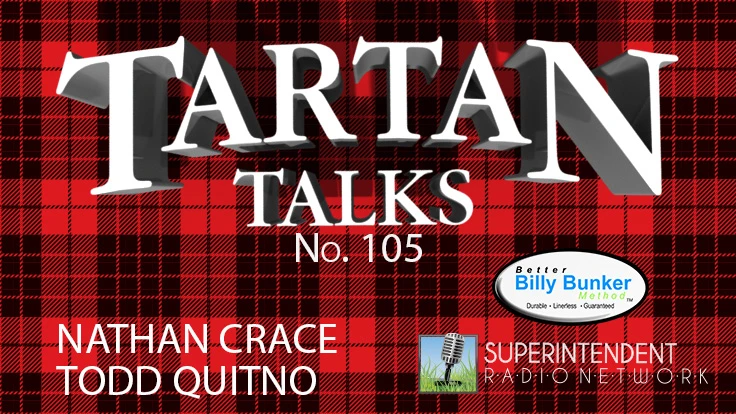Advertisement

1. Compared to Acelepryn® insecticide, what additional insects can golf course superintendents expect to control with Acelepryn Xtra insecticide?
McDonald: In the Northeast and mid-Atlantic regions, one of the significant benefits of Acelepryn Xtra is its excellent ant control. Ants have increasingly become problematic in sand-based systems over the past decade or so. Currently, the leading insecticides used for annual bluegrass weevil (ABW) often have a narrower control spectrum. However, with Acelepryn Xtra, we have seen between six to eight weeks of ant control with significantly reduced ant mound formation. Outside of these regions, Acelepryn Xtra may result in mole cricket suppression, but the primary benefit is the extended duration of ant control.
2. While Acelepryn Xtra and Acelepryn have some of the same insects on their labels, how does Acelepryn Xtra offer enhanced control of some of these insects?
McDonald: Acelepryn Xtra significantly enhances chinch bug control compared to Acelepryn, which is only labeled for suppression because of its limited activity against the pest. The active ingredient thiamethoxam in Acelepryn Xtra is a significant advancement in controlling chinch bugs, which can cause rapid and substantial damage to high-grass areas on golf courses. Superintendents have observed effective hairy chinch bug control for at least six weeks.
Beirn: With two active ingredients, Acelepryn Xtra provides exceptional control of white grubs. The inclusion of thiamethoxam expands the window for early curative activity against white grub larvae up to the second instar, offering potential for early curative applications in August if needed.
Acelepryn Xtra has demonstrated highly effective activity against billbugs. In areas with recurrent billbug problems, split applications can help provide enhanced control over Acelepryn alone. With its dual active ingredients, Acelepryn Xtra also shows promise in elevating control of crane flies, subject to ongoing assessments.
Additionally, data suggests Acelepryn Xtra can provide up to 12 weeks of control against southern chinch bugs.
3.If superintendents use Acelepryn Xtra for grubs and caterpillars, will they get ABW control as well?
Beirn: Although Acelepryn Xtra is approved for ABW control, we continue to recommend Acelepryn for ABW control. While Acelepryn Xtra at the 20 fl. oz./A rate offers 10 fl. oz./A of chlorantraniliprole and 16.7 fl. oz./A of thiamethoxam, thiamethoxam is not labeled for ABW. Acelepryn Xtra can provide some control of ABW when timed correctly as part of targeted applications for white grubs and caterpillars. However, if you are primarily targeting ABW, Acelepryn at the 12 fl. oz./A rate remains the preferred choice.
4. How do the application windows differ between the products?
McDonald: For over 15 years, Acelepryn treatments have been highly effective when applied between April and May to target grubs and caterpillars for season-long control. This timing remains effective for Acelepryn Xtra. However, with the inclusion of thiamethoxam for early curative grub control and broader-spectrum insect control, Acelepryn Xtra applications have demonstrated excellent efficacy even when applied later, such as in June or July. This extended application window is advantageous as applications made in June can control additional pests like ants and chinch bugs, which may not be as active in April and May.
5. How can a superintendent effectively manage early caterpillar infestations while also targeting other pests with Acelepryn Xtra?
Beirn: A split application of Acelepryn Xtra can be effective for targeting early caterpillar control while addressing other pests like billbugs and white grubs. The optimal timing of this application may vary by location, but is typically at the end of May and again at the end of June. This approach can offer appropriate control of these pests. If chinch bugs and ants are also a concern, one application in June or July is recommended.
For more information, visit GreenCastOnline.com/AceleprynXtra. You can also easily determine which Acelepryn brand is right for your operation by visiting GreenCastOnline.com/AceleprynBrands.
Performance assessments are based upon results or analysis of public information, field observations and/or internal Syngenta evaluations. Trials reflect treatment rates commonly recommended in the marketplace.
© 2024 Syngenta. Important: Always read and follow label instructions. Some products may not be registered for sale or use in all states or counties and/or may have state-specific use requirements. Please check with your local extension service to ensure registration and proper use. Scimitar GC is a Restricted Use Pesticide. Acelepryn®, GreenCast®, Scimitar® and the Syngenta logo are trademarks of a Syngenta Group Company. All other trademarks are the property of their respective third-party owners.

Explore the April 2024 Issue
Check out more from this issue and find your next story to read.
Latest from Golf Course Industry
- Beyond the Page 65: New faces on the back page
- From the publisher’s pen: New? No way!
- Indiana course upgrades range with synthetic ‘bunkers’
- Monterey Peninsula CC Shore Course renovation almost finished
- KemperSports and Touchstone Golf announce partnership
- PBI-Gordon Company hires marketing manager Jared Hoyle
- Mountain Sky Guest Ranch announces bunker enhancement project
- GCSAA names Joshua Tapp director of environmental programs









